This article was written by Emily Keppel and Katrina Ben
While the Western tradition of bookbinding is well represented in the State Library Victoria collection, the Library also holds a small but fascinating assortment of manuscripts produced in the Islamic world.
The Michael Abbott Collection of Southeast Asian Islamic Manuscripts consists of 50 handwritten and printed items, mostly produced in Indonesia around the late 19th to early 20th centuries. Some manuscripts also originate from Turkey, Singapore and India and feature a range of languages, including Javanese, Arabic and Malay.
The manuscripts are all Islamic in content, including 22 Qur’ans and 28 naskah, or religious texts, which include prayers, commentaries and stories of the prophets. The Collection offers a rich primary source of knowledge about the transmission and teaching of Islam in Southeast Asia, as well as the religious and commercial trade networks functioning during a time of colonisation.

An illuminated Qur’an from the Michael Abbott Collection of Southeast Asian Islamic Manuscripts. Photograph: Emily Keppel
A clear understanding of the different materials and structures used in the production of Islamic manuscripts is essential for the Library’s Book Conservators to make informed decisions regarding appropriate methods for preservation, repair and display.
Recognising this need, Senior Book Conservator Katrina Ben and Preservation Technician Emily Keppel recently attended an Islamic Book Binding Workshop at the Islamic Arts Museum of Malaysia (IAMM) in Kuala Lumpur, from 24 to 28 July 2017.
The workshop was presented by Book Conservator Dr Karin Scheper, one of the world’s leading authorities on Islamic bookbinding. Dr Scheper has carried out extensive research on the Islamic collections held at the University of Leiden in The Netherlands. She’s also the author of the first major book in English on the conservation of Islamic manuscripts, The technique of Islamic bookbinding. The workshop provided knowledge of the structure and materials of Islamic manuscripts, gain insight into the various region-specific types and characteristics, and develop skills in the conservation of Islamic manuscripts.
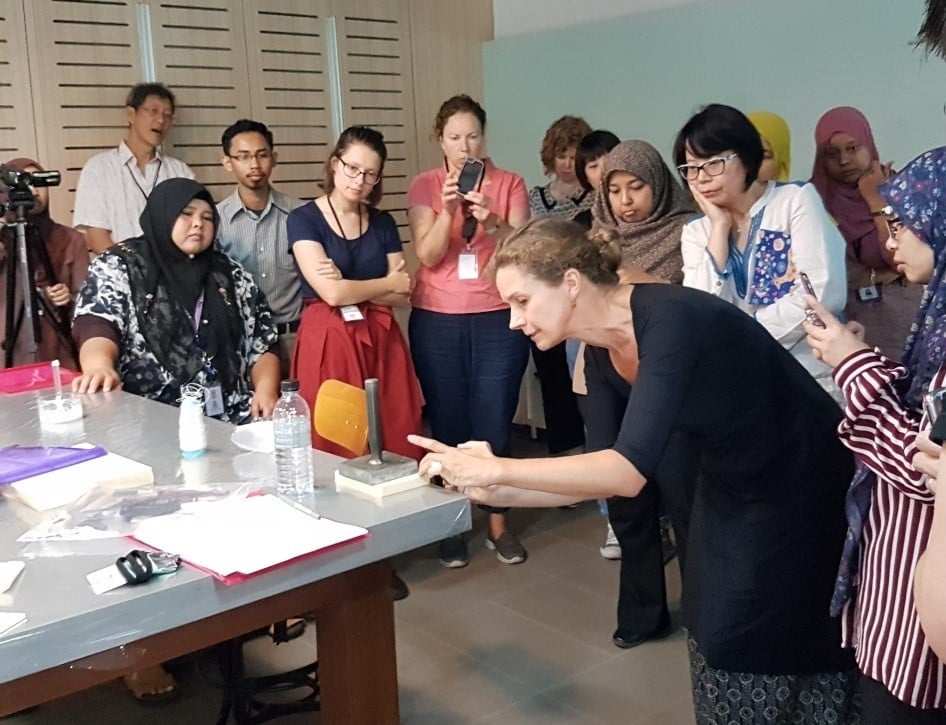
Dr Karin Scheper demonstrating the application of starch paste to the textblock spine. Photograph: Katrina Ben
The workshop offered a unique opportunity to gain a deeper understanding of a bookbinding practice that developed quite separately to the Western tradition. Islamic manuscripts typically feature a pentagonal envelope-flap that extends from the back cover over the text block edge. The text block is sewn without supports and the endbands are often sewn in a chevron pattern. The spine is generally flat and the boards cut flush to the textblock.
The five-day course was a mix of lectures, practical sessions and tours of the IAMM’s exhibitions and conservation laboratories.
The construction of our own manuscript model occupied a major part of the practical session. This included folding and sewing the paper gatherings, mastering the art of the woven endband, and creating a binding with buffalo leather and decorative papers that we had marbled ourselves. Through constructing a model of an Islamic binding, the unique features of these bindings that had initially appeared puzzling, now made a lot more sense.
For example, a cursory glance at the structure of an Islamic binding might suggest that the sewing is minimal and not very strong. However, when making our model we could see that the endband, while appearing to be merely decorative, was a functioning element of the sewing system. As it was sewn through the spine lining, it was also part of the binding structure; strengthening the attachment between pages and binding.

Top: Manuscript model from the workshop showing the primary endband and patterned secondary endband forming the binding structure. Bottom: Chevron patterned endband on a manuscript from the Michael Abbott Collection. Photographs: Katrina Ben Emily Keppel)
To learn how to make the endbands, we made up a couple of samples on pieces of board to practise the weaving technique. The white stitches are the functional part of the endband, replicating the primary endbands on a manuscript. Here, a piece of leather is used as an endband core. Onto these threads, in two or more colours, the secondary endbands are then woven to create one of a range of patterns.
Practising the sewing of the endbands was a great way to learn a difficult technique before applying it, on a smaller scale, to the model book.
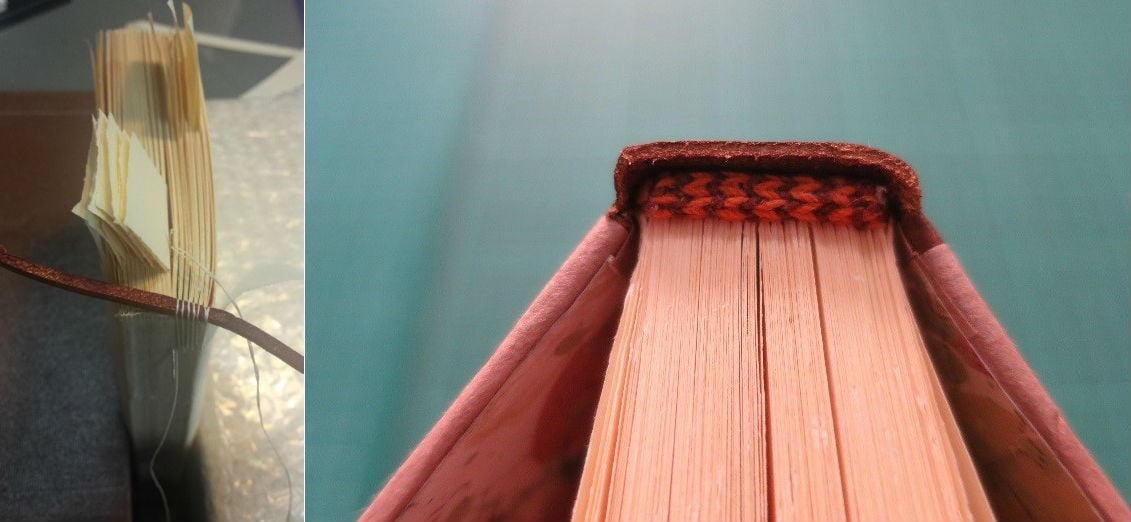
Left: Sewing the primary endbands around a leather core onto the textblock
Right: Completed secondary endbands on the manuscript model. Photographs: Emily Keppel
Making the binding itself was fascinating; undertaken with a limited number of tools and using only starch paste, reflected the likely practice of an Islamic bookbinder’s workshop.
Dr Scheper strove to convey the importance of recognising Islamic bindings on their own terms, and to not let our knowledge of Western book structures lead to misinterpretations of the features of Islamic manuscripts.
We also learnt about a number of features that are distinctive to the Islamic manuscripts from the Southeast Asian region, such as endbands finished with a decorative tuft of threads and the use of dluwang, a distinctive Javanese barkpaper. Understanding these regional variations is vital, as such features could easily be misinterpreted as a damage when looking at old and aged bindings.
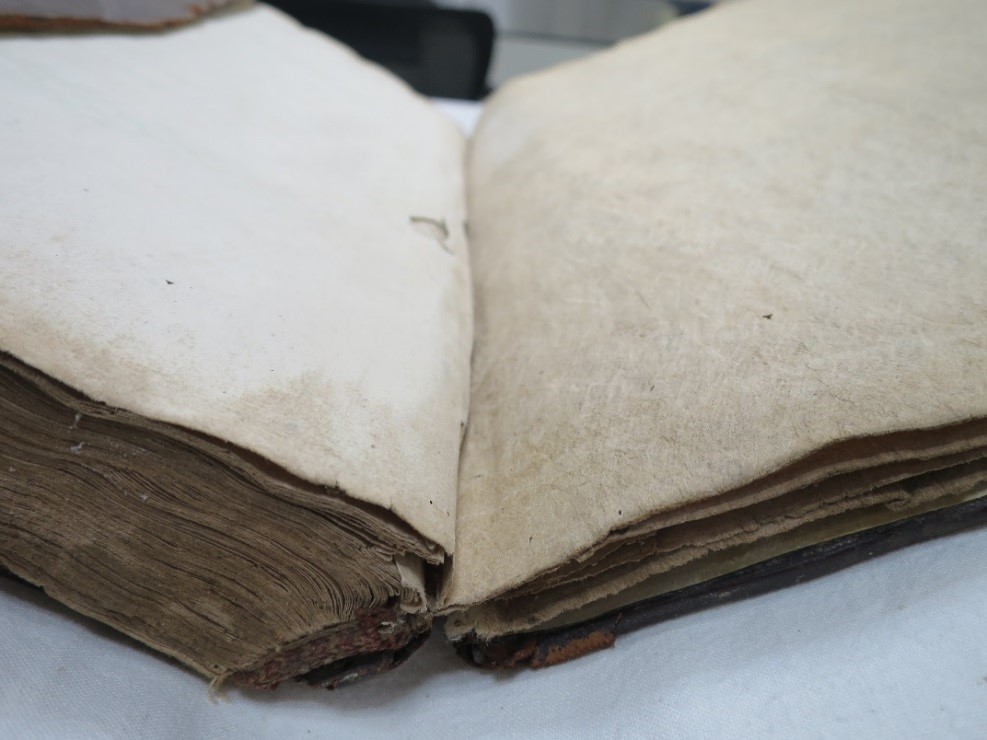
A Qur’an from the Michael Abbott Collection. The endpaper (on right) is made from Javanese barkpaper. Photograph: Emily Keppel
The new knowledge and skills we gained from this workshop will be shared with our colleagues and will help inform display and conservation strategies for the Michael Abbott Collection, including for a Qur’an now on display in World of the book.
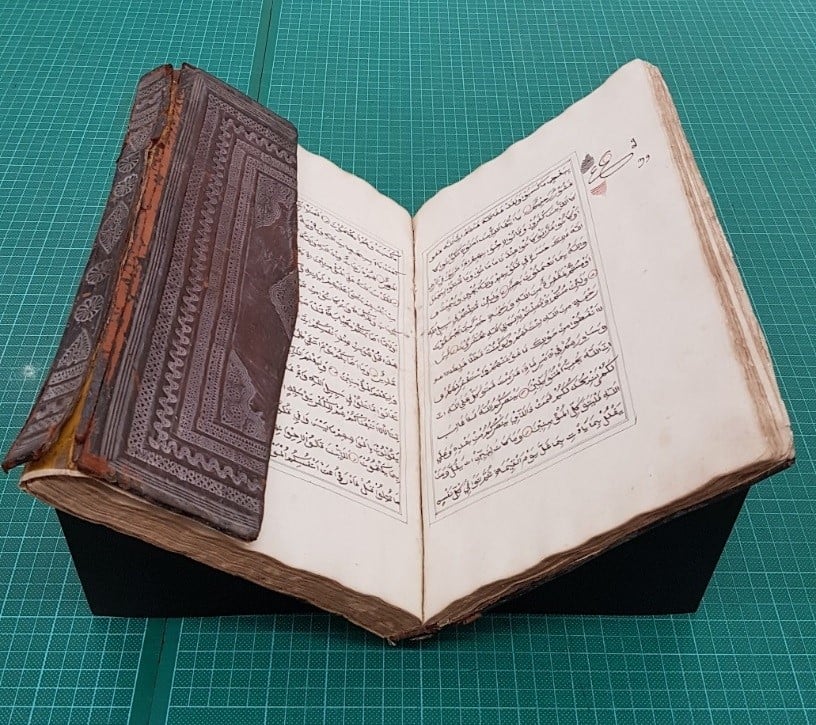
Qur’an from the Michael Abbott Collection being prepared for display in World of the book. Photograph: Katrina Ben

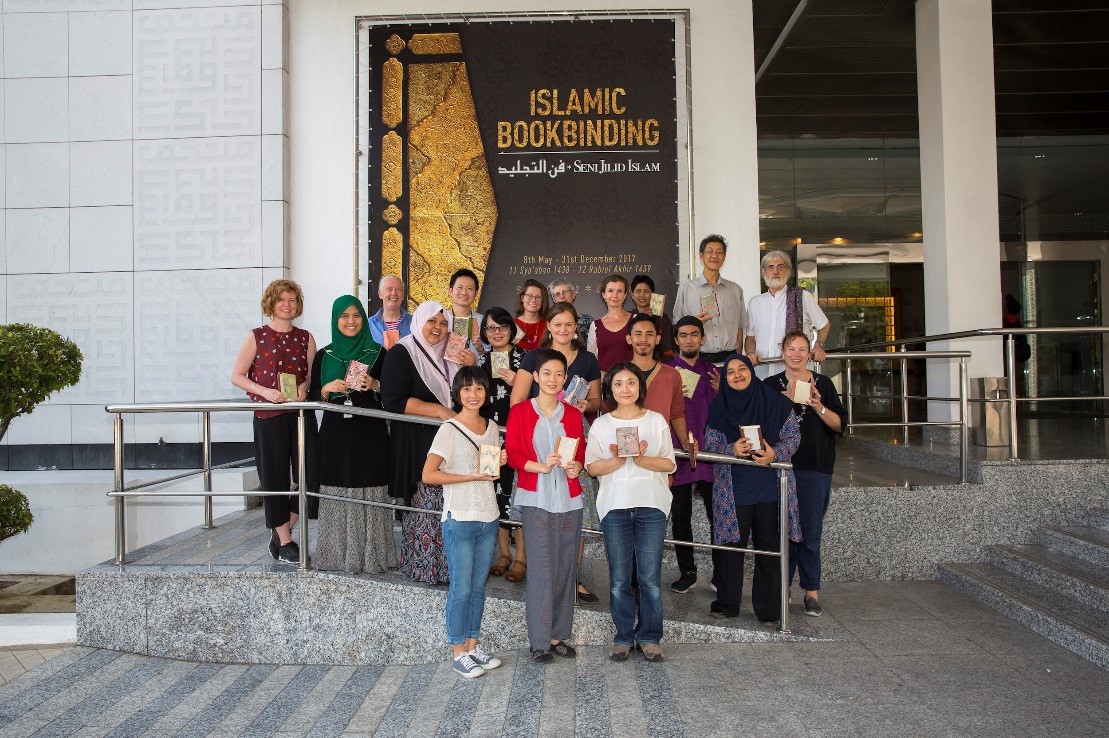

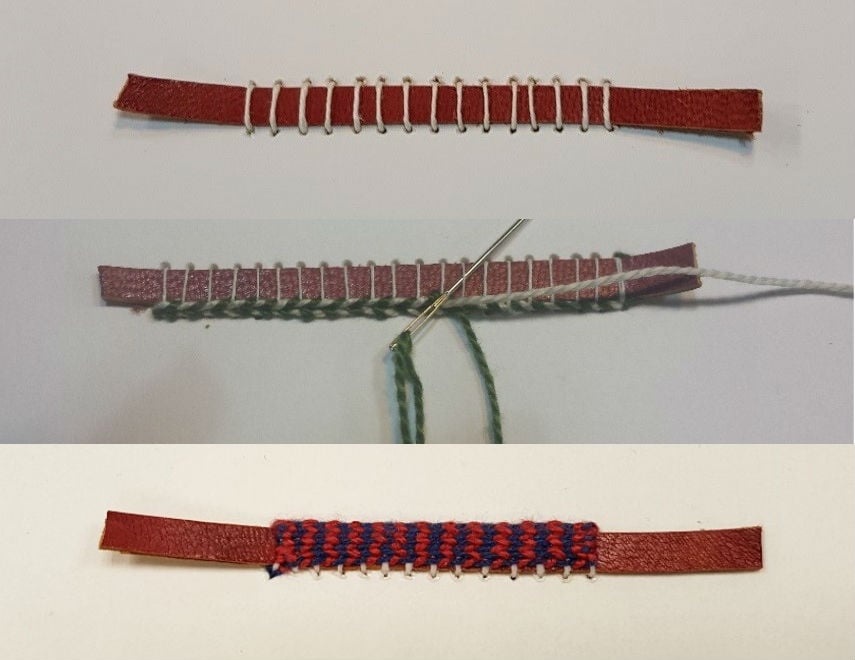

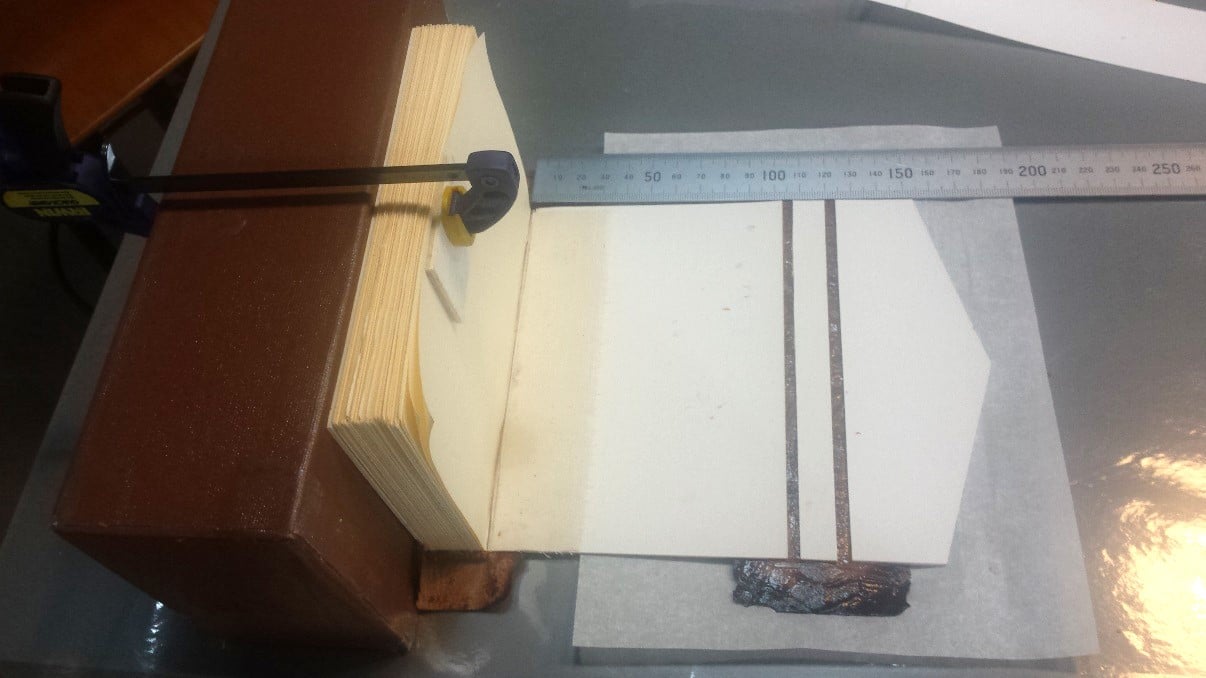

Great to hear about this sort of research on the collection
A valuable workshop for conservators. It’s great to see the ongoing development and learning of Australian book conservators and book binders.